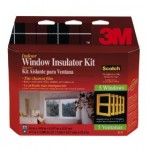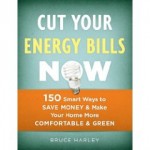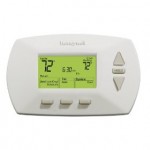 About this time every year I buy a roll of window plastic
About this time every year I buy a roll of window plastic from Home Depot and cover the windows in my home. It doesn’t take very long to apply the plastic, and it helps to prevent cool drafts coming from our windows. Heating your home in the winter is expensive enough; there’s no point in letting your heat escape.
If you apply the plastic properly and then blow dry it, most, if not all of the creases will disappear and you will hardly even notice that the plastic is there. If this is your first time purchasing window plastic, I would recommend that you first measure your windows to ensure that you buy enough plastic to cover them. I prefer buying the large rolls as opposed to the smaller window kits, but it really depends on the size of your windows.
It’s also important to note that most often the window plastic is double-layered and all you need to use is a single layer on each window. Be sure to separate the layers and your window plastic will go twice as far.
Window plastic kits aren’t that expensive, and they are well worth your money if it means you will be able to save on your winter heating bills. When spring finally comes, simply remove the plastic and rip off the tape. So far, I have never had any trouble with the tape causing any damage as it is specifically designed for window frames.
If you buy the larger rolls, you may have enough plastic for next winter as well. Be sure to hang on to the leftovers as the plastic may come in handy for other tasks as well such as to cover furniture while painting, etc.
Stay tuned for more energy-saving and money-saving tips to get you through the winter.

 The Home Energy Diet: How to Save Money by Making Your House Energy Smart by Paul Scheckel
The Home Energy Diet: How to Save Money by Making Your House Energy Smart by Paul Scheckel Cut Your Energy Bills Now: : 150 Smart Ways to Save Money and Make Your Home More Comfortable and Green by Bruce Harley
Cut Your Energy Bills Now: : 150 Smart Ways to Save Money and Make Your Home More Comfortable and Green by Bruce Harley I highly recommend buying a
I highly recommend buying a